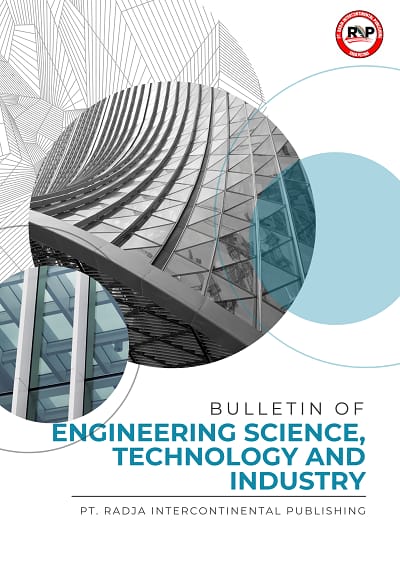ANALYSIS OF COMMUNICATION MANAGEMENT FACTORS ON THE LEVEL OF PROJECT SUCCESS (Case Study: Construction of North Sumatra Suspension Bridge)
Main Article Content
Nabila Fitrah
Gina Cynthia Raphita Hasibuan
M. Ridwan Anas
Communication management plays a crucial role in ensuring the success of construction projects. This research aims to examine how communication management influences project success, taking the construction of the North Sumatra Suspension Bridge as a case study. The study utilizes the PLS-SEM method, with data gathered through surveys distributed to key stakeholders, including contractors, supervisory consultants, and the project owner. The findings reveal that the most significant communication management factors affecting project success are communication skills (0.917), contributing 10.39%; the use of tools and technology (0.904), contributing 10.25%; and communication frequency (0.901), contributing 10.21%. Overall, communication management accounts for 75.9% (R² = 0.759) of the variation in project success indicators. These results highlight a strong correlation between communication management components and project success in the North Sumatra Suspension Bridge. Implementing structured, technology-driven, and transparency-focused communication strategies can significantly enhance the effectiveness and efficiency of construction project execution.
Annisa, A. (2019). Manajemen Komunikasi Proyek: Studi Kasus Perusahaan Berbasis Engineering, Procurement, Construction dan Manufacturing (EPCM) Kawasan Industri Jababeka Cikarang. Planners Insight : Urban and Regional Planning Journal, 2(1), 026–034. https://doi.org/10.36870/insight.v2i1.27
Atkinson, R. (1999). Project management: Cost, time and quality, two best guesses and a phenomenon, its time to accept other success criteria. International Journal of Project Management, 17(6), 337–342. https://doi.org/10.1016/S0263-7863(98)00069-6
Dash, G., & Paul, J. (2021). CB-SEM vs PLS-SEM methods for research in social sciences and technology forecasting. Technological Forecasting and Social Change, 173(July), 121092. https://doi.org/10.1016/j.techfore.2021.121092
Fornell, C., & Cha, J. (1994). Advanced Methods of Marketing Research (Blackwell (ed.); Partial Le).
Hair, Joseph F., Hult, G. T. M., Ringle, C. M., Sarstedt, M. (2021). Partial Least Squares Structural Equation Modeling. Handbook of Market Research, November, 587–632. https://doi.org/10.1007/978-3-319-57413-4_15
Hussain, S., Fangwei, Z., Siddiqi, A. F., Ali, Z., & Shabbir, M. S. (2018). Structural Equation Model for evaluating factors affecting quality of social infrastructure projects. Sustainability (Switzerland), 10(5), 1–25. https://doi.org/10.3390/su10051415
Kenneth H. Rose. (2008). Project Portfolio Control and Portfolio. Project Management Journal, 39(June), 28–42. https://doi.org/10.1002/pmj
Saputra, A. A. I., Kadar Yanti, R. M., Wiguna, I. P. A., & Nurcahyo, C. B. (2017). Pengaruh Komunikasi Terhadap Keberhasilan Proyek Pada Hubungan Kerja Antara Kontraktor dan Subkontraktor. JST (Jurnal Sains Terapan), 3(2). https://doi.org/10.32487/jst.v3i2.265
Senaratne, S., & Ruwanpura, M. (2016). Communication in construction: a management perspective through case studies in Sri Lanka. Architectural Engineering and Design Management, 12(1), 3–18. https://doi.org/10.1080/17452007.2015.1056721
William, D., Tirtoatmodjo, T., & Andi, D. (2020). Komunikasi Antara Owner Dengan Kontraktor Serta Permasalahanya Pada Proyek Konstruksi Di Surabaya. Jurnal Dimensi Pratama Teknik Sipil, 9(2), 70–77.









